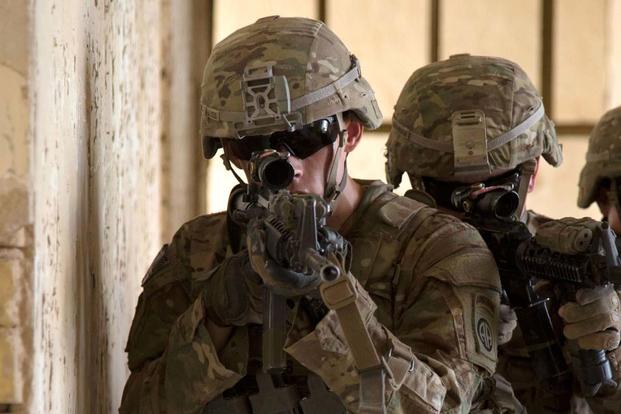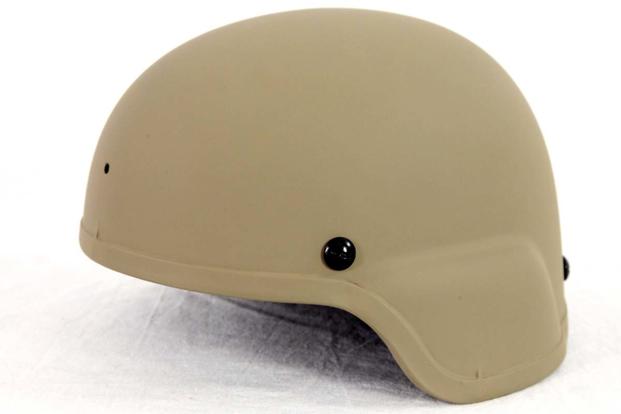Army equipment officials said Thursday that the service's newest combat helmet will feel significantly lighter to soldiers while providing the same protection.
The Advanced Combat Helmet Gen II will replace the legacy Advanced Combat Helmet, which was fielded about 15 years ago.
The service earlier this month awarded Revision Military, based in Essex Junction in Vermont, a contract worth about $98 million to make 293,870 of the new helmets.
Made of high-density polyethylene instead of the current helmet's Kevlar, the ACH Gen II weighs about 2.5 pounds in size large -- about a 24-percent weight reduction, officials from Program Executive Office Soldier said at Fort Belvoir in Virginia.
For small and medium sizes, the Gen II is about 21-percent lighter than the standard ACH, making the new helmet an average of 22-percent lighter, Maj. Brandon Motte, assistant product manager for Soldier Protective Equipment, told reporters Thursday.
Despite being lighter, the ACH Gen II provides the same protection against fragmentation and 9mm projectiles as the current helmet, equipment officials maintain.
The Army has come a long way in head protection since the steel pot, which was replaced in the early 1980s by the Kevlar Personnel Armor System for Ground Troops, or PASGT, helmet.
The weight reduction from the ACH to the ACH Gen II is "double and triple" what was achieved when the ACH replaced the PASGT, said Jacob Hopping, chief system engineer for the program.
"This is the largest weight reduction we have ever had on a head protection item," he said. "We have never had this big of a jump and maintained the same protection level. This is a truly revolutionary move."
Soldiers wear a helmet 12 to 18 hours a day in training and combat situations. Over an extended period of time, it causes a lot of fatigue and stress on the body that can reduce a soldier's overall effectiveness, Motte said.
The ACH Gen II is an example of how the service is working to reduce the soldier's combat load.
"What we have been able to demonstrate to the Army and to our fellow soldiers is that the Army can and will continue to get after weight reduction and to give them a solution that they can ... definitely feel the difference," said Lt. Col. Kathy Brown, product manager for Soldier Protective Equipment. "And you can tell with these helmets. You can truly feel the difference in the weight."
But the ACH Gen II isn't the first helmet to use high-density polyethylene fibers.
The Army also fields the Enhanced Combat Helmet to soldiers for high-threat combat situations such as Iraq and Afghanistan. The ECH is about the same weight as the standard ACH but provides increased protection and is capable of stopping rifle rounds, Brown said.
"You do have some more high-intensity conflicts such as Iraq and Afghanistan than where as we were going out to the Horn of Africa or other contingencies that are not as high threat," Brown said, explaining that the ECH is currently on the Rapid Fielding Initiative list for deployments.
The ECH will also form the bridge in technology to the Integrated Head Protection System, which the Army hopes to begin fielding by 2020.
It features a base helmet with add-ons such as a visor, a "mandible" portion that protects the lower jaw, and a "ballistic applique" that is much like a protective layer that attaches over the base helmet.
Eventually, all deploying soldiers will get the IHPS with the base helmet, which is the standard configuration. Other soldiers, vehicle gunners in particular, will also get the mandible portion and the ballistic applique, known as the turret configuration.
The goal is to refine the polyethylene helmet to maximize both weight reduction and increased protection.
"This really was a focused effort to see how far we could push the weight reduction and maintain the same level of protection" Hopping said. "We pushed the technology as far as we could."
-- Matthew Cox can be reached at matthew.cox@military.com.































